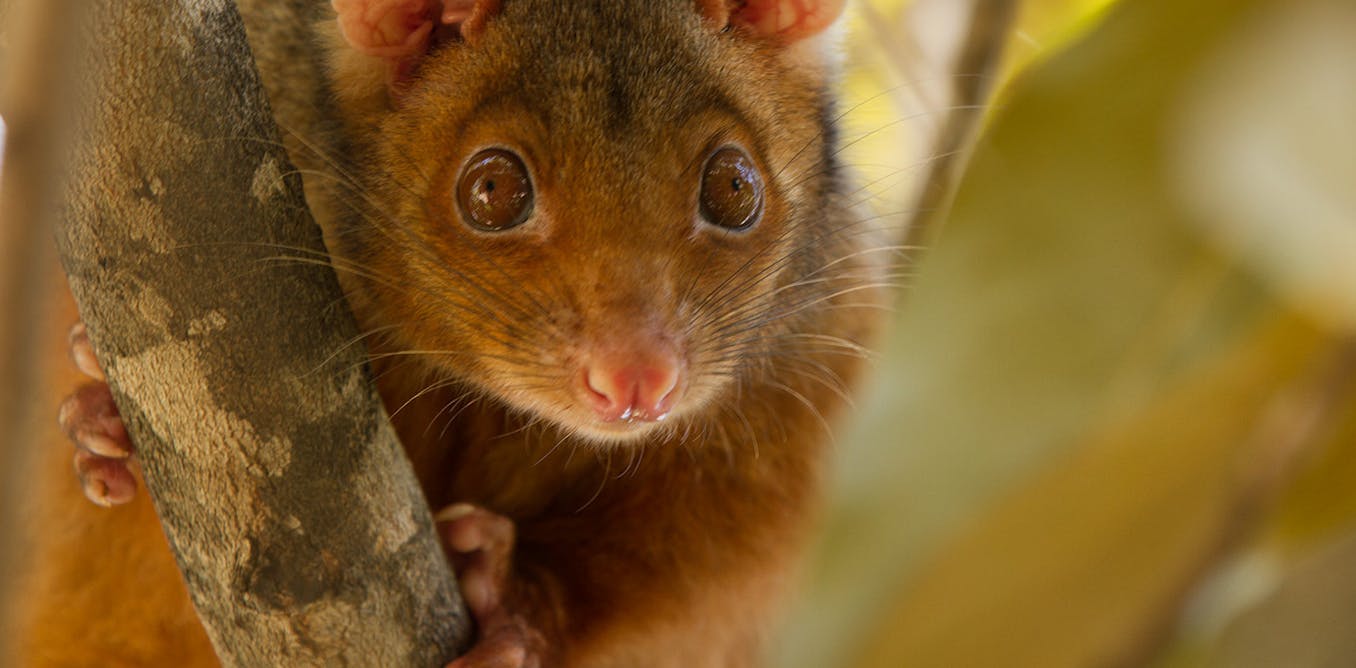[ad_1]
Tularemia is a illness that impacts people and different animals. It’s attributable to an infection with the bacterium Francisella tularensis and is often unfold by biting bugs or by direct contact with an contaminated animal.
Human an infection is much less widespread than an infection in small animals like rabbits and rodents. However it is necessary human instances are recognised and identified rapidly as a result of with out acceptable therapy the illness could be life-threatening.
Our workforce has lately confirmed its presence in Australia in samples taken from ringtail possums who died in two outbreaks in early 2000.
Whereas that is clearly a newly recognized threat to public well being, it’s necessary to recognise how uncommon the illness is and the way properly the an infection responds to therapy.
How is it transmitted to people?
Tularemia is a “zoonotic illness”, an animal illness that may be transmitted to people. The commonest approach somebody is likely to be contaminated is by being straight uncovered to an contaminated animal by way of a chunk or scratch, and even dealing with contaminated tissue, like when hunters pores and skin animals.
Additional studying: First Hendra, now bat lyssavirus, so what are zoonotic ailments?
Human infections can even happen not directly from an animal by way of a biting insect vector, like ticks or deer flies. So, a fly may feed on an contaminated animal then additionally chunk a human, transferring the bacterium through its mouth elements.
People can even catch the illness from animals by coming into contact with environmental sources reminiscent of water or soil which were contaminated by an contaminated carcass. The micro organism may then infect people by way of the attention, or an open wound, or even when digested from contaminated meals.
How uncommon is tularemia in people?
Thankfully, human instances of tularemia are comparatively uncommon and look like restricted to the Northern Hemisphere. But, even within the US, the place the illness is properly described, human instances not often exceed 100-200 a 12 months.
Australia has lengthy been thought-about tularemia-free. So, it was stunning when, in 2011, two human instances had been reported in Tasmania after publicity to ringtail possums.
Whereas diagnostic exams on the sufferers’ samples advised an an infection with the bacterium, no samples had been obtained from the offending possums to corroborate the bizarre an infection.
Extra importantly, researchers couldn’t develop and isolate the micro organism from any of the sufferers’ samples. Observe-up surveys of native animals within the space didn’t detect the organism. So, the story of tularemia in Australia had, till lately, remained considerably of a thriller.
How can I shield myself?
Whereas our examine has confirmed the presence of tularemia in Australia and recognized ringtail possums as a reservoir for the illness, no-one is aware of if it’s current in different wildlife alongside the east coast.
Additional studying: Bites and parasites: vector-borne ailments and the bugs spreading them
So, to minimise the probabilities of an infection, take care when dealing with sick, distressed or useless animals. Equally, when travelling in an space with ticks or different biting bugs, put on protecting clothes and repellents.
How do I do know if I’m contaminated?
In people, tularaemia signs can range however usually depend upon how somebody was uncovered.

CDC Public Well being Picture Library/Wikimedia
The commonest type of illness in people is called ulceroglandular tularemia, which develops after an contaminated animal or insect bites or wounds you. Because the title suggests, you develop a sudden fever, an ulcer types on the website of an infection, and the lymph glands close to the wound swell.
One other and maybe extra critical type of the illness is pneumonic tularemia. This could happen once you breathe in micro organism from contaminated mud or aerosols, and your lungs change into contaminated. Signs embrace cough, chest ache and problem respiration, and could be troublesome to deal with.
Sure, it may be handled
Whereas an infection can probably trigger extreme illness and might kill, well timed therapy with generally obtainable antibiotics ought to clear the an infection. Nonetheless, it is necessary the illness is appropriately identified as the best antibiotics (reminiscent of streptomycin) are sometimes completely different to these used to deal with different bacterial pores and skin or wound infections.
There have been no reported instances of people infecting different people. Whereas being uncovered to somebody contaminated with tularemia may pose some threat, the rarity of the instances and the effectiveness of antibiotic therapies to manage the an infection minimise this.
Seeking to the longer term
What our examine highlights greater than something is the necessity to examine wildlife illness to grasp potential dangers to the environment and our personal well being.
So, we plan to conduct additional surveys of animal and tick-borne ailments to discover undiscovered pathogens that will have an effect on public well being or affect our native animal populations.
We’re additionally making use of the identical expertise used to verify the presence of tularemia in Australian wildlife for the primary time to research different chilly instances of the animal illness world – uncared for and undiagnosed animal ailments.
We do that utilizing a robust method referred to as “RNA-Seq”, quick for RNA sequencing, to analyse samples. With RNA-Seq, there’s no must know what ailments is likely to be current; researchers sequence all the genetic materials within the pattern, whether or not it has come from a bunch reminiscent of a human or animal, or from an infecting organism reminiscent of a virus, micro organism, or parasite.
This “metagenome” knowledge is then pieced collectively and in comparison with databases containing genome knowledge from beforehand sequenced pathogens.
By these research, we hope to disclose the total variety of pathogens current in our native wildlife, and notably, those who sit on the human-animal interface, a fault line that enables microbes to circulate from one host to a different. Most novel rising ailments are spill-overs from zoonotic sources, so this analysis is crucial for human well being.
[ad_2]